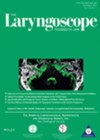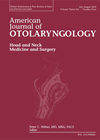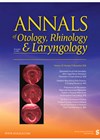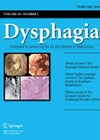
Journal Reviews
Endolymphatic duct, a bit more than what meets the eye
It is theorised that the endolymphatic duct (ED) and the endolymphatic sac (ES) system play a role in both the production and absorption of endolymph. This system could be responsible for development of endolymphatic hydrops (EH). Recently, the presence of...
Should we leave a reconstructed auricle exposed?
Microtia results in psychological and functional morbidity and total auricle reconstruction offers the affected individual a more cosmetically pleasing ear. The art of dressing postoperatively can be heterogenous between surgeons. This single-centre retrospective study based in China compared complication rate...
Does vocal tremor lead to changes in swallowing function?
Vocal tremor (VT) is a debilitating problem, but remains challenging to treat. Its pathophysiology remains indeterminate and there is a lack of consensus on phenotypes. Clinically, VT is often noted to be present in muscles outside of the larynx, including...
In the context of the person with aphasia participating in life
Approaches to assessment and treatment for people with aphasia have traditionally taken a syndrome or deficit-based view. It’s only in the last few decades that a more functional approach to aphasia has been recognised, namely the need to couch both...
Will getting a rhinoplasty make you feel better?
“The National Health Service is in serious trouble.” This is the opening line of the introduction of Lord Darzi’s report to the Secretary of State for Health in England. His deep dive into the current state of the NHS in...
Bell’s palsy incidence in Korean population
Bell’s palsy is an acute idiopathic paresis or paralysis of the peripheral facial nerve. It is the most common cause of facial nerve palsy with a reported incidence ranging from 11.5–55.3 per 100,000. The aetiology remains unclear. Several studies have...
Adjuvant radiotherapy for T4N0 laryngeal cancers treated with laryngectomy
A total laryngectomy remains the gold standard for the initial treatment of advanced (T4) squamous cell carcinomas of the larynx without evidence of distant disease. Adjuvant radiotherapy (RT) is also recommended for such cancers. In the absence of other adverse...
A viable solution for isolated post-nasal drip?
This retrospective, single-centre case series looked at a cohort of patients with postnasal drip as their primary symptom. Exclusions were patients with chronic rhinosinusitis. The interventions offered were temperature-controlled radio frequency (TCRF) ablation of the posterior nasal nerve delivered by...
Tonsillectomies are a pain in the neck!
You thought tonsilitis was bad? Having your tonsils removed, now that’s a hard pill to swallow. Very well, you’ll no longer have to fear the CENTOR, but how do we make recovery as pain-free as possible? Pantabtim and colleagues set...
Persistent postural-perceptual dizziness: a functional neuro-otologic disorder
Persistent postural-perceptual dizziness (PPPD) is a neuro-otological disorder that is the most common cause of chronic vestibular syndrome. It is not a purely structural or psychiatric disease but a functional disorder. The authors reviewed the literature to summarise the diagnostic...
Diagnosis and management of acute sensorineural hearing loss: a Japanese perspective
In this paper, the authors set out the clinical guidelines to standardise diagnosis and treatment of acute sensorineural hearing loss in Japan. They categorised acute sensorineural hearing loss into five disorders: idiopathic sudden sensorineural hearing loss (iSSNHL), acute low-tone sensorineural...
Dysphagia services in the emergency department
The emergency department acts as the first port of call for many individuals with wide-ranging diagnoses and conditions, several of whom may potentially present with dysphagia. It is not a usual environment in which speech and language therapists regularly work,...
















